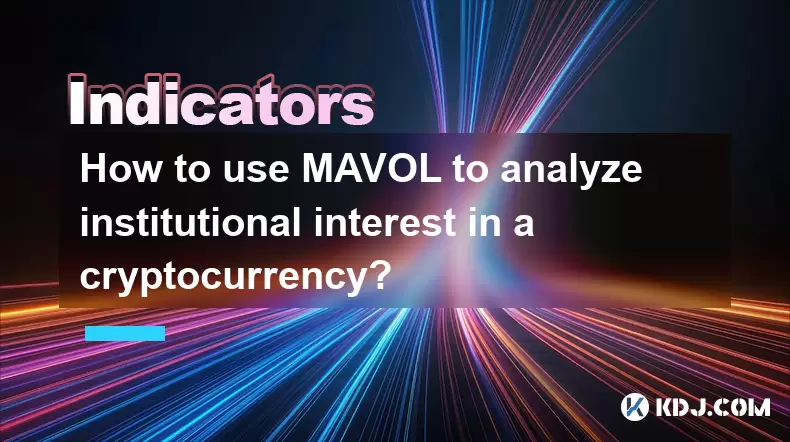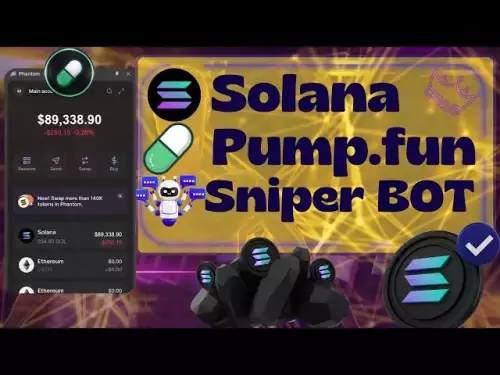-
 Bitcoin
Bitcoin $115100
-1.30% -
 Ethereum
Ethereum $4758
-1.70% -
 XRP
XRP $3.027
-2.19% -
 Tether USDt
Tether USDt $0.9998
-0.01% -
 BNB
BNB $883.2
-1.42% -
 Solana
Solana $204.0
2.62% -
 USDC
USDC $1.000
0.02% -
 Dogecoin
Dogecoin $0.2371
-0.97% -
 TRON
TRON $0.3612
-1.24% -
 Cardano
Cardano $0.9128
-2.19% -
 Chainlink
Chainlink $26.13
-3.93% -
 Hyperliquid
Hyperliquid $44.73
0.90% -
 Sui
Sui $3.715
-0.56% -
 Stellar
Stellar $0.4153
-2.41% -
 Ethena USDe
Ethena USDe $1.000
-0.04% -
 Bitcoin Cash
Bitcoin Cash $588.9
-2.06% -
 Avalanche
Avalanche $25.91
3.27% -
 Hedera
Hedera $0.2525
-1.45% -
 Litecoin
Litecoin $120.9
-1.35% -
 UNUS SED LEO
UNUS SED LEO $9.607
0.30% -
 Toncoin
Toncoin $3.382
-0.31% -
 Shiba Inu
Shiba Inu $0.00001329
-0.38% -
 Uniswap
Uniswap $11.38
-1.67% -
 Polkadot
Polkadot $4.222
2.83% -
 Aave
Aave $354.5
4.93% -
 Dai
Dai $0.0000
0.00% -
 Bitget Token
Bitget Token $4.704
-1.49% -
 Cronos
Cronos $0.1565
1.83% -
 Ethena
Ethena $0.7463
1.55% -
 Monero
Monero $265.8
-0.39%
How to use MAVOL to analyze institutional interest in a cryptocurrency?
MAVOL helps detect institutional interest by revealing sustained volume increases during price consolidation, signaling stealthy accumulation over time.
Aug 13, 2025 at 11:35 am

Understanding MAVOL and Its Role in Cryptocurrency Analysis
MAVOL, or Moving Average Volume, is a technical indicator that calculates the average trading volume of a cryptocurrency over a specified period. Unlike price-based moving averages, MAVOL focuses exclusively on volume trends, offering insights into market participation and momentum. In the context of institutional interest, sustained high volume—especially when aligned with price stability or upward movement—can signal accumulation by large players. Institutions typically trade in large blocks, and their activity often leaves a footprint in volume data. By analyzing MAVOL, traders and analysts can detect shifts in volume that may not be immediately visible through price action alone.
When MAVOL rises consistently over time, it suggests growing engagement from market participants. Because institutions avoid sudden, large price movements that could impact their entry or exit points, they often accumulate positions gradually. This behavior results in elevated volume over extended periods, which MAVOL captures effectively. A spike in volume followed by a return to baseline may indicate retail-driven FOMO (fear of missing out), while a steady increase in MAVOL with minimal price volatility may point to institutional accumulation.
Setting Up MAVOL on a Trading Platform
To begin analyzing institutional interest using MAVOL, access a cryptocurrency trading platform that supports custom volume indicators. Platforms like TradingView, Binance, or CoinGecko Pro allow users to overlay MAVOL on price charts. The process involves several steps:
- Navigate to the chart interface for the cryptocurrency of interest.
- Locate the “Indicators” button, usually found at the top of the chart.
- Search for “Volume MA” or “Moving Average Volume” in the indicator library.
- Select the desired period—common choices include 20-day, 50-day, or 100-day moving averages.
- Apply the indicator and adjust the color and line thickness for clarity.
Once applied, the MAVOL line appears beneath the main price chart, typically in the volume panel. Ensure the volume displayed is on-chain or exchange-aggregated, not just spot volume, to capture a broader view of market activity. Some platforms allow filtering volume by exchange type (e.g., derivatives vs. spot), which can further refine institutional signal detection.
Interpreting MAVOL Trends for Institutional Signals
The key to using MAVOL for institutional analysis lies in pattern recognition over time. Institutions rarely engage in erratic trading; their strategies emphasize stealth and long-term positioning. Therefore, the following patterns are significant:
- A rising MAVOL trend over 30+ days, especially during sideways price movement, may indicate accumulation.
- Divergence between price and MAVOL—such as price stagnation while MAVOL climbs—can suggest hidden demand.
- Consistent volume above the MAVOL line on up days, paired with low volume on down days, hints at controlled selling and strong buying interest.
For example, if Bitcoin trades between $60,000 and $62,000 for two months while MAVOL(50) steadily increases, this could reflect institutional buyers absorbing supply without triggering a breakout. Conversely, a sharp drop in MAVOL after a price surge may indicate that the rally was retail-driven and lacks institutional backing.
Correlating MAVOL with On-Chain and Derivatives Data
To strengthen the reliability of MAVOL signals, combine it with on-chain metrics and derivatives activity. On-chain tools like Glassnode or Santiment provide data on large wallet movements, exchange inflows/outflows, and entity-adjusted supply distribution. When MAVOL shows rising volume and on-chain data reveals net outflows from exchanges and increasing balances in wallets holding 1,000+ coins, the likelihood of institutional accumulation rises.
Derivatives data also plays a role. Platforms like Bybit or Binance Futures offer open interest and funding rate metrics. If MAVOL is increasing and open interest in perpetual futures is rising without excessive leverage, it may suggest institutions are building long positions. Avoid relying solely on volume; cross-verify with:
- Exchange net flow: Negative values (more coins leaving exchanges) support accumulation.
- Large transaction counts: A rise in transactions over $100,000 aligns with institutional behavior.
- Funding rates: Sustained positive but not extreme rates suggest steady long positioning.
Using Timeframes and Multiple MAVOL Periods for Confirmation
To reduce false signals, apply multiple MAVOL periods simultaneously. For instance, overlay MAVOL(20), MAVOL(50), and MAVOL(100) on the same chart. When shorter-term MAVOL crosses above longer-term MAVOL and all three trend upward, it strengthens the case for growing institutional interest.
Timeframe selection is equally critical. While daily charts are standard, examining weekly MAVOL trends can reveal macro-level accumulation. Zooming into 4-hour or 1-hour charts may help identify tactical entries by large players during low-liquidity periods. Always compare volume behavior across timeframes:
- On the weekly chart, look for a breakout above historical MAVOL levels.
- On the daily chart, assess whether volume surges coincide with key support levels.
- On shorter timeframes, check if volume spikes occur during institutional trading hours (e.g., UTC 08:00–17:00).
This multi-timeframe approach prevents overreaction to short-term noise and enhances confidence in detecting genuine institutional activity.
Common Misinterpretations and How to Avoid Them
A rising MAVOL does not automatically mean institutional involvement. Retail speculation, exchange listings, or meme-driven rallies can also inflate volume. To differentiate:
- Check the price context: If volume rises with extreme price volatility and social media hype, it’s likely retail-driven.
- Assess duration: Institutional accumulation spans weeks or months; short spikes are less meaningful.
- Review order book depth: Institutions often place large limit orders deep in the order book. Platforms like Kaiko or CryptoQuant offer order book analytics.
Avoid conflating total volume with real transaction volume. Some exchanges inflate volume through wash trading. Prioritize MAVOL data from reputable, audited exchanges or aggregated sources that filter synthetic volume.
Frequently Asked Questions
Can MAVOL be used for altcoins with low market cap?
Yes, but with caution. Low-cap altcoins are more prone to manipulation and pump-and-dump schemes. A rising MAVOL in such assets may reflect coordinated retail activity rather than institutional interest. Always verify with on-chain movement and exchange flow data before drawing conclusions.
What is the ideal MAVOL period to detect institutional activity?
There is no universal setting, but MAVOL(50) and MAVOL(100) are most effective for identifying medium to long-term trends. Shorter periods like MAVOL(20) react quickly but may generate false signals. Use multiple periods together for confirmation.
Does MAVOL work during bear markets?
Yes. In downtrends, a rising MAVOL during price consolidation can indicate accumulation at lower levels. Institutions often build positions during bear markets when fear is high. Look for volume increasing while price declines slow or stabilize.
How do I distinguish between institutional buying and whale trading?
Institutional activity tends to be more consistent and spread across exchanges. Whale movements are often isolated and may trigger sharp price changes. Combine MAVOL with wallet clustering analysis and exchange-specific volume breakdowns to differentiate between the two.
Disclaimer:info@kdj.com
The information provided is not trading advice. kdj.com does not assume any responsibility for any investments made based on the information provided in this article. Cryptocurrencies are highly volatile and it is highly recommended that you invest with caution after thorough research!
If you believe that the content used on this website infringes your copyright, please contact us immediately (info@kdj.com) and we will delete it promptly.
- XYZVerse, Shiba Inu, and the 2025 Bull Cycle: A Meme Coin Evolution
- 2025-08-24 13:05:12
- WLFI Token, BingX, and the Trading Landscape: A New York Perspective
- 2025-08-24 12:45:20
- Aave, Governance, Allocation: Navigating DeFi's Shifting Sands
- 2025-08-24 12:45:20
- Crypto Coins in 2025: Meme Coins, Undervalued Blockchains, and Bull Run Predictions
- 2025-08-24 13:05:12
- Fed Pivot Ignites Crypto Rally: Altcoins Set to Outperform?
- 2025-08-24 13:25:12
- Eric Trump, Tokyo, and Metaplanet: A Bitcoin Bonanza?
- 2025-08-24 11:05:13
Related knowledge

What does it mean when the +DI and -DI cross frequently in the DMI indicator but the ADX is flattening?
Aug 11,2025 at 03:15am
Understanding the DMI Indicator ComponentsThe Directional Movement Index (DMI) is a technical analysis tool composed of three lines: the +DI (Positive...

What does the sudden appearance of a "dark cloud cover" candlestick pattern during an uptrend indicate?
Aug 13,2025 at 11:35am
Understanding the 'Dark Cloud Cover' Candlestick PatternThe dark cloud cover is a bearish reversal pattern in technical analysis that typically appear...

What does it mean when the moving average, MACD, and RSI all send buy signals simultaneously?
Aug 11,2025 at 01:42pm
Understanding the Convergence of Technical IndicatorsWhen the moving average, MACD, and RSI all generate buy signals at the same time, traders interpr...

What does it mean when both the KDJ indicator and the RSI show overbought signals simultaneously?
Aug 13,2025 at 11:35am
Understanding the KDJ Indicator in Cryptocurrency TradingThe KDJ indicator is a momentum oscillator derived from the Stochastic Oscillator, widely use...

What does it mean when the price is trading above the SAR indicator but the red dots are densely packed?
Aug 09,2025 at 11:49pm
Understanding the SAR Indicator and Its Visual SignalsThe SAR (Parabolic Stop and Reverse) indicator is a technical analysis tool used primarily to de...

What does it mean when the candlestick chart forms a "Morning Star" but trading volume is sluggish?
Aug 12,2025 at 06:28pm
Understanding the Morning Star Candlestick PatternThe Morning Star is a three-candle bullish reversal pattern commonly observed in cryptocurrency pric...

What does it mean when the +DI and -DI cross frequently in the DMI indicator but the ADX is flattening?
Aug 11,2025 at 03:15am
Understanding the DMI Indicator ComponentsThe Directional Movement Index (DMI) is a technical analysis tool composed of three lines: the +DI (Positive...

What does the sudden appearance of a "dark cloud cover" candlestick pattern during an uptrend indicate?
Aug 13,2025 at 11:35am
Understanding the 'Dark Cloud Cover' Candlestick PatternThe dark cloud cover is a bearish reversal pattern in technical analysis that typically appear...

What does it mean when the moving average, MACD, and RSI all send buy signals simultaneously?
Aug 11,2025 at 01:42pm
Understanding the Convergence of Technical IndicatorsWhen the moving average, MACD, and RSI all generate buy signals at the same time, traders interpr...

What does it mean when both the KDJ indicator and the RSI show overbought signals simultaneously?
Aug 13,2025 at 11:35am
Understanding the KDJ Indicator in Cryptocurrency TradingThe KDJ indicator is a momentum oscillator derived from the Stochastic Oscillator, widely use...

What does it mean when the price is trading above the SAR indicator but the red dots are densely packed?
Aug 09,2025 at 11:49pm
Understanding the SAR Indicator and Its Visual SignalsThe SAR (Parabolic Stop and Reverse) indicator is a technical analysis tool used primarily to de...

What does it mean when the candlestick chart forms a "Morning Star" but trading volume is sluggish?
Aug 12,2025 at 06:28pm
Understanding the Morning Star Candlestick PatternThe Morning Star is a three-candle bullish reversal pattern commonly observed in cryptocurrency pric...
See all articles

























































































